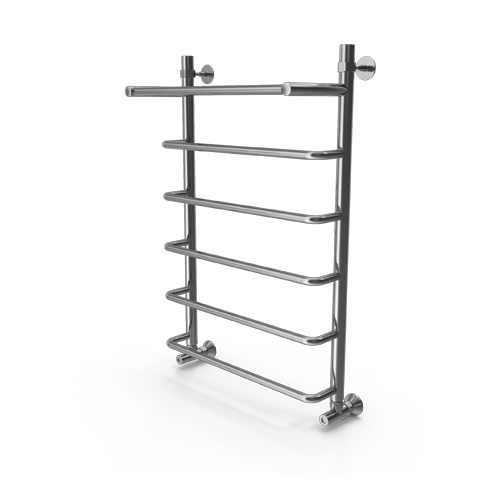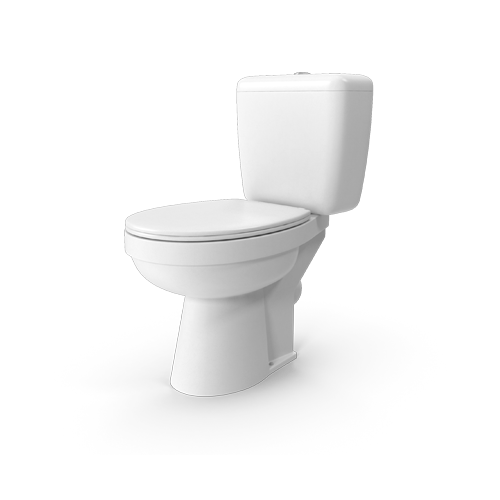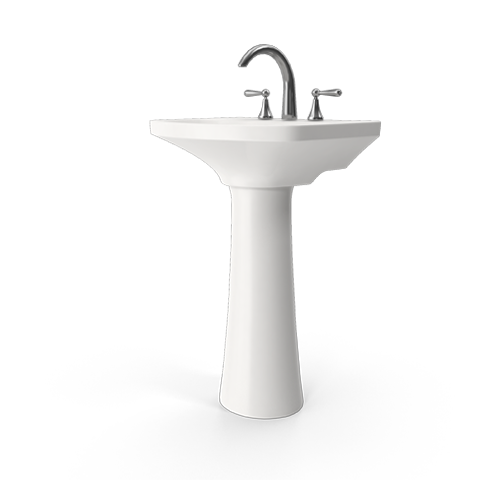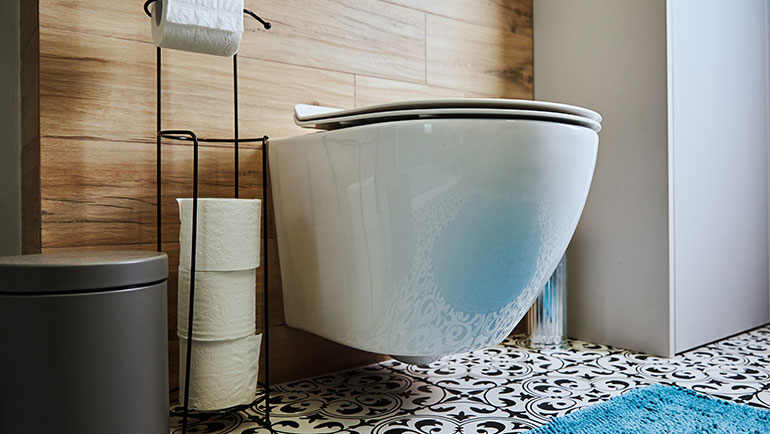How to replace a toilet seat
Do you want to upgrade the seat on your porcelain throne? These tips and tricks will have you sitting pretty in no time.
Toilet seats usually do not last as long as toilets themselves. In most cases, a toilet seat lasts just five years before it cracks, shifts during use, or becomes hopelessly stained. It is inevitable that you will have to replace the toilet seat at some point due to its shorter lifespan. Usually, it’s a fairly straightforward and inexpensive DIY project that requires only a few basic tools that most DIYers already have.
Should I replace my toilet seat?
Toilet seats can be replaced for various reasons, including broken or cracked seats, fixtures that have crumbled and made them wobble and move when sat on… Or perhaps you are upgrading your bathroom and want a different look.
If you’re having your bathroom done professionally, your new loo will likely include a seat, but if not, keep reading.
Are all toilet seats the same size?
Since toilets come in a variety of shapes, not all toilet seats fit all toilets, so be sure to check before buying. Replacing your toilet seat is arguably the most important step – you don’t want one that doesn’t fit your toilet.
Toilets in the UK come in three distinct shapes. Typical seats include the pointed-nose, D-shaped, and round-nose models. It is usually possible to adjust replacement toilet seats to fit older or non-standard toilets; however, the seat needs to be supported at the contact points or hinges.
There is one important thing to do before buying a seat…
How to measure a toilet seat
You need to measure your toilet in order to find the best toilet seat. Though most seats are adjustable to fit the most common shapes of toilet bowls, there are vital measurements you need to take. You need to measure:
- Distance between fixing holes—where screws are. Standard measurements are usually 155mm, but it’s worth checking.
- The width of the toilet bowl at its widest point. The length of the toilet seat at its longest point (measured from the centre bolt to the end).
- The distance between the front of the bowl and the two holes for fixing the seat.
These measurements will help you select the right toilet seat size.
Alternatively, you can carry the existing seat to the home improvement store to find a matching replacement. This is if you wish to skip the measurements and don’t mind receiving some odd looks. Just make sure you clean it first.
Choosing a New Toilet Seat
While replacing a toilet seat does not pose any significant safety risks, it is a good idea to give the toilet a thorough cleaning before getting started. Wear nitrile gloves to protect your hands from germs and bacteria. Toilet seat design has witnessed a tide of innovation in recent years, though not quite cutting edge. So when you’re ready to replace your toilet seat, make sure you look for these key characteristics:
Quiet closing: Toilet seats no longer bang shut when closed.. Now you can choose a product with hinges designed to gently fold back the seat.
Moulded-in-place bumpers: These bumpers protect the toilet seat from damage, provide a stable seat, and reduce noise when closing the lid.
Colours: Toilet seats now come in dozens of colours. Manufacturers offer colour selector tools to help homeowners narrow down their options.
Cleaning: A better seat makes cleaning easier. Look for a product that can be removed with a simple screwdriver. Alternatively, quick-release seats allow you to easily and without a tool remove the seat and clean the area around the hinges.
Select a toilet seat with stainless steel or zinc-plated hinges, which will not snap or corrode and hold the seat in place. The most common type of toilet seat is plastic. Although wood is more comfortable, plastic is cheaper and easier to clean than wood.
Each type of toilet seat requires a slightly different method of installation. Understand the quirks and idiosyncrasies of the product you choose by consulting its instructions.
Alternatively, speak to the Plumleys plumbing supplies team about choosing your next toilet seat.
How to replace a toilet seat step-by-step
Modern toilet seats are so simple to install that removing the old one is likely to be the most difficult part. Protect yourself from germs and bacteria by thoroughly cleaning the rim around the toilet seat before removing it.
When the bowl is clean, locate the two bolts that hold the seat in place and remove it. They are often covered in plastic covers, so if you can’t find them, just look around. Open the covers, then look under the bowl for the nuts.
Most nuts are made of plastic and can be removed by hand. Remove metal hardware with an adjustable wrench or socket wrench.
If your existing toilet seat has metal hardware that fastens to the bowl, the dampness and humidity of the bathroom might have corroded the hinges. This could make it difficult to remove the nuts. You can spray each nut with penetrating oil, such as WD-40, wait ten minutes, and then try again.
Penetrating oil will not penetrate heavily corroded bolt threads. In that case, use a drill to bore a hole into the bolt. Twist the nut with your socket wrench or adjustable wrench until the bolt snaps off. You should use this method with caution since too much lateral force on the bolt could potentially crack the bowl. Getting a wrench in the right position to work on the hardware can be tough because of the bolts’ location behind the toilet seat. You will need a socket wrench with an extended well so that the long bolt and nut can be covered. There is no need to worry about the socket wrench slipping off the nut. A long bolt and an angled wrench handle will also help you to turn the nut more easily.
After removing the old toilet seat, you can then proceed with installing the new one.
The task is usually done with a few nuts and bolts, so tools are rarely required. First, thread the bolts through the holes in the bowl. After that, tighten the nut beneath the bowl using an adjustable wrench. Larger or elongated nuts are easier to handle. If you need to replace a toilet seat in a tight space, you may need a tool designed for tight spaces.



